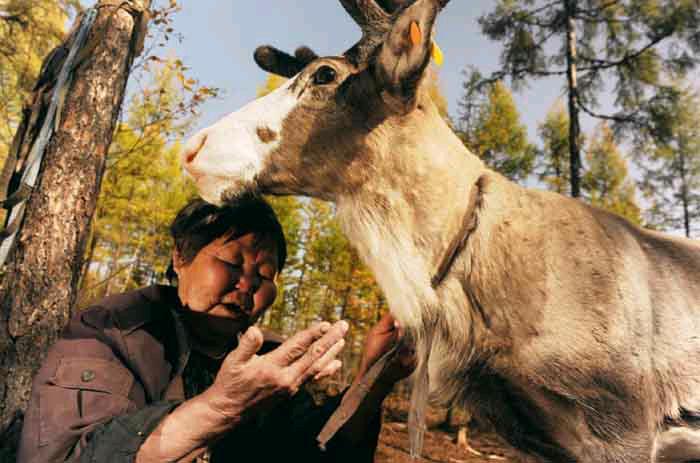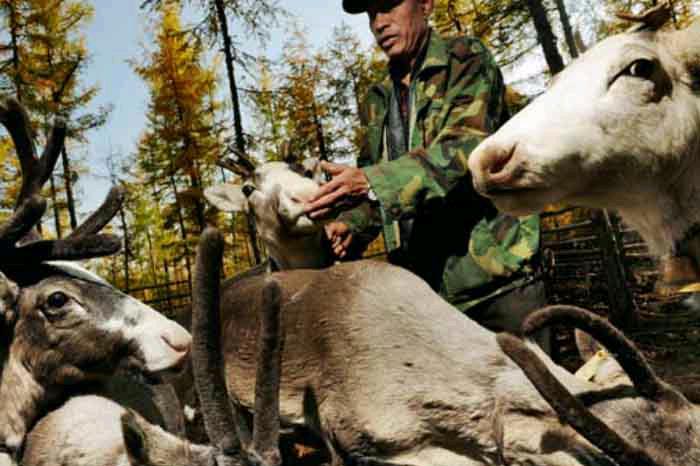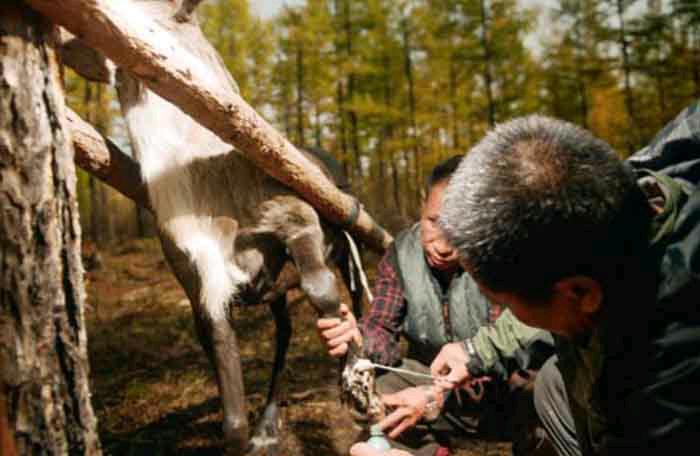Ewenki People:Seeking Harmonious Coexistence with Forests
2017-09-27byAnYiandFanZhang
by+An+Yi+and+Fan+Zhang
Located in the north of Chinas Heilongjiang Province and Inner Mongolia Autonomous Region, the Greater Khingan Mountains are an oxygengenerating natural wonder covering a large and dense forest area. With a total length of more than 1,200 kilometers and a width of 200 to 300 kilometers, the vast expanse is an important forestry base in northern China and home to the largest intensive bright coniferous forests in the country. The fertile area not only supports diverse plant and animal species, but also nurtures the “Reindeer Ewenki” people of China. More than 300 years ago, reindeer-herding Ewenkis had already settled in the Greater Khingan Mountains.
Migration of Reindeer-herding Ewenki
The Ewenki people are a cross-border ethnic group primarily inhabiting Russia and China today. And a small population can also be found in Mongolia. According to Chinas 2010 national population census, the Ewenkis, which are recognized as one of Chinas 56 ethnic groups, have a population of more than 30,000. In Chinese history, the Ewenki had three branches: farmers, herders and hunters. The hunters, most known to the public, were active in the Greater Khingan Mountains. Because they relied on domesticated reindeer for milk and transport and hunted other animals for meat, they have been known as the reindeer-herding Ewenkis.
As early as the 18th Century, the reindeer-herding Ewenki people relocated to the Greater Khingan Mountains from even further north areas.
In the mid-20th Century, the lives of reindeer-herding Ewenkis began to slowly but steadily change. Before 1949, the reindeer herders were a patrilineal society. After 1949, under organization of the government, Ewenki people have relocated four times, gradually further from the deep mountains. The last “migration” happened in 2003, when a majority of Ewenki people moved to Olguya Township of Genhe City in the Inner Mongolia Autonomous Region, a move motivated by ecological protection of the Greater Khingan Mountains.
Logging Ban
Due to the needs of economic development, China started to develop the Greater Khingan Mountains in the 1950s. As a result, the forested area saw a rapid decrease. In the 1990s, the country realized the serious impact of environmental and forest resource crises caused by excessive exploitation and began to change related policies to better protect the mountains. In 2000, China launched its Natural Forest Protection Program to curb the deterioration of the ecological environment at the root causes, protect biological diversity, and promote sustainable social and economic development.endprint
Since then, the Greater Khingan Mountains have seen great efforts to adjust the forest regions economic structure, industrial structure and product mix. In 2011, the area began its transformation to ecological development. Timber yield was reduced in consecutive years. Beginning from 2014, logging has been completely banned in the area, saving an estimated two million cubic meters of timber resources each year.
Since the logging ban on the Greater Khingan Mountains went into effect, the area has been in rest and recovery, but now the reindeer herders face another change in lifestyle.
New Life for “Ecological Migrants”
In 2003, due to a national ban on hunting, Ewenki people in the Greater Khingan Mountains handed in their rifles, and began to adopt alternate means of subsistence, the most popular of which was reindeer herding. At that time, many reindeer herders moved to the new settlement constructed by the government in the suburbs of Genhe City. The new locale was designed by Finnish architects. All the houses were constructed of wood and in villa style to ensure they stayed warm in winter and cool in summer. The homes were equipped with appliances, furniture, cable TV, flush toilet, tap water, and central heating, all of which were provided to the Ewenki people by the government, free of charge. Even hot water and telephone services were free. And each household also received complimentary daily use items from the government. The strong Ewenki flavor in the new settlement attracted abundant tourists from both China and abroad.
While it takes time for some older hunters to adjust to the new life, young Ewenki people consider the ecological resettlement and hunting prohibition a new opportunity.
They receive governmental support and subsidies to raise reindeer, which has enabled them to avoid migrating through the dangerous deep forests like their forefathers. Reindeer are no longer used for transportation. Their antlers and skins become a major source of income for breeders. The local tourism business caused a boom in Ewenki family incomes, which enabled their kids to receive better education in big cities.
Nevertheless, for resettled Ewenki people, life is different than their nomadic forefathers. Today, each family or household usually raises a few dozen reindeer. To enable the reindeer to run freely, which they need to grow up healthily, Ewenki people have made many innovations. For example, September is the mating season for reindeer. During the month, male reindeer usually have a hot temper and often fight with each other. To avoid the fighting, Ewenki herders make the animals go out, move around, and feed in different groups. While one group is out, the others are confined to fences made of pine or birch. They also collect considerable moss to feed reindeer in winter. Before winter comes, Ewenki people venture into the mountains to collect enough moss. They fill ten large bags, which take multiple trips to carry back. Since moss, the staple food of reindeer, grows so slowly, when the moss of one forest has been consumed, Ewenki herders move around to search for food for their animals despite being settled.
More than 300 years ago, when they first arrived in the Greater Khingan Mountains, the reindeer-herding Ewenki people could have hardly imagined living so close to modern cities. However, these people, who preserve a deep love for forests, have been exploring a harmonious coexistence with forests and remain full of hope. endprint
endprint